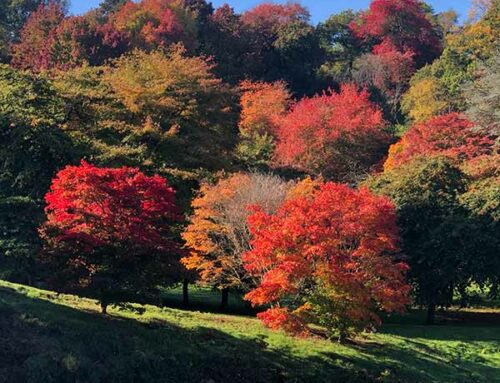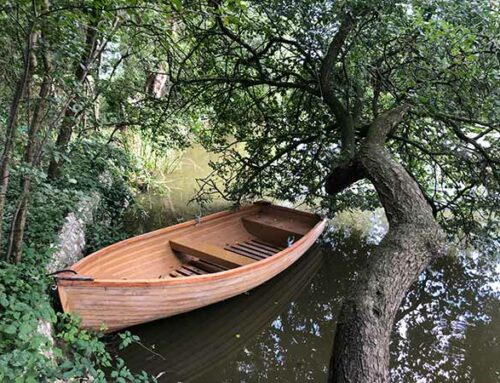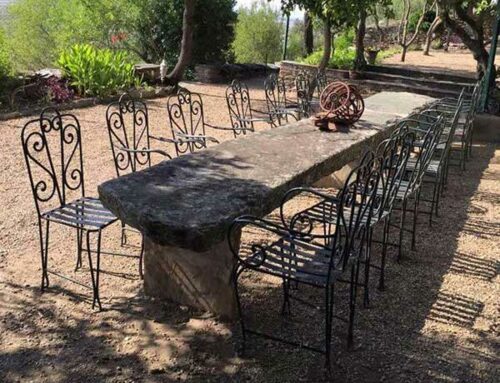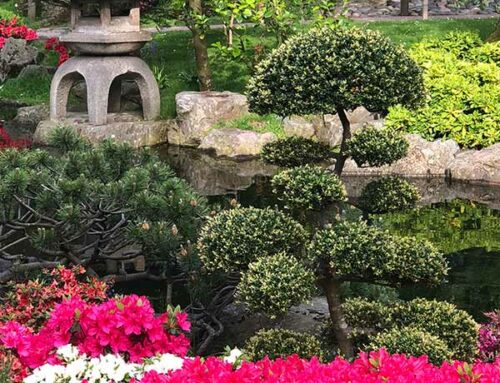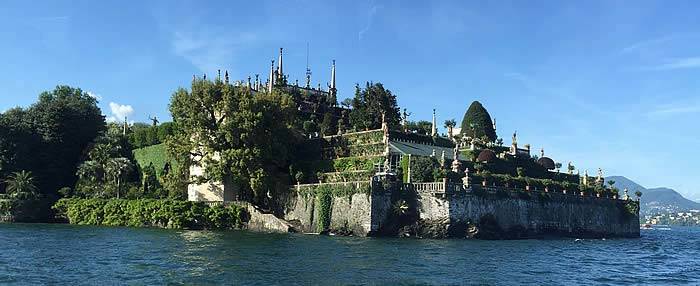
Inspirational Gardens – Isola Bella, Lake Maggiore, Italy – approach from Stresa
Magically situated, surrounded by the deep blue waters of Lake Maggiore, the gardens on the Island of Isola Bella, Borromeo family residence, is one of Italy’s most inspirational destinations and a fine example of the Italian baroque garden. Impossibly romantic and breathtakingly beautiful, the gardens of Isola Bella (which means Beautiful Island) are an absolute joy.
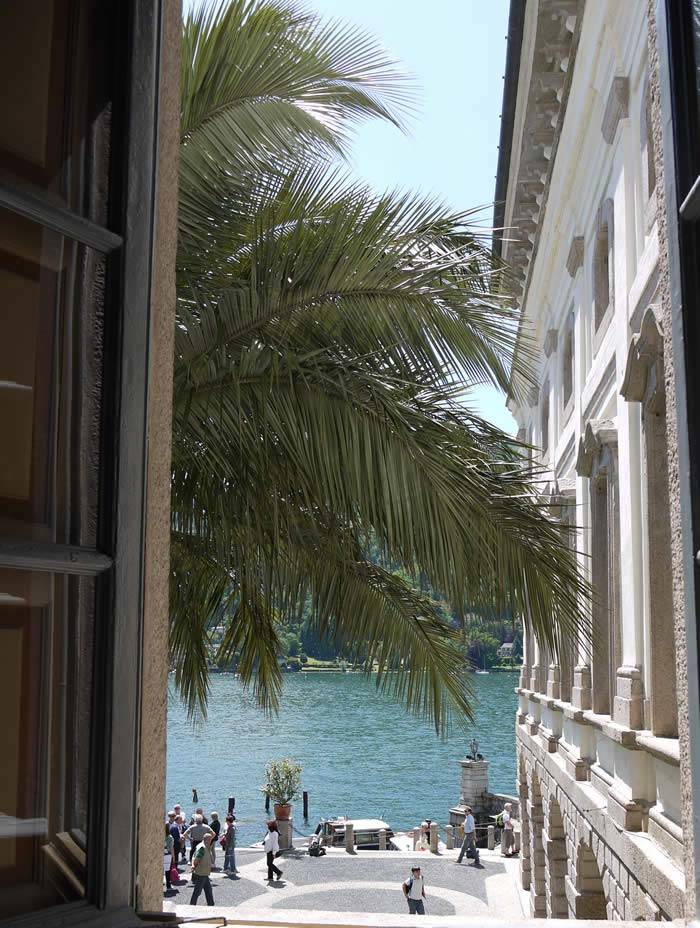
Isola Bella – view from the palace over the lake
From the scenic shores of Lago Maggiore, the Island of Isola Bella can easily be reached by taking a short ferry trip from the quaint lakeside town of Stresa. We were delighted to have had our own private tour of Isola Bella. Our charming hosts Romeo and Alessandro regaled us with stories of the rich history of this garden island. Romeo, who grew up on the neighbouring Isola dei Pescatori (Fisherman’s Island) has been with the Borromeo family for 35 years – so yes, he knows a few stories.
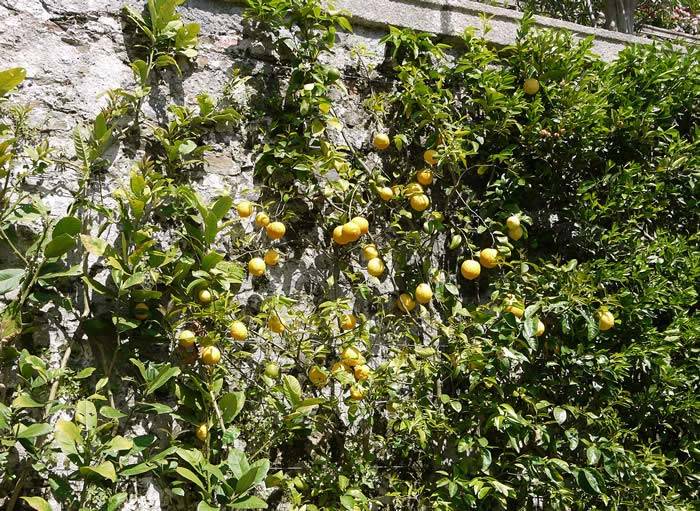
Espaliered Lemon Trees in the gardens of Isola Bella, Lake Maggiore, Italy
Full of history, this has been an island garden since the 1630s. Isola Bella was the first garden in Europe in which camellias, rhododendrons and the colossal camphor tree became acclimatised. There are wonderful collections of espaliered citrus trees and the island is home to families of white peacock and many rare plants. One of Italy’s showcase gardens, Isola Bella is full of elegance and charm. Today, the Borromeo family employs a team of 16 full time gardeners on the island.
Entering the gardens from the palace through an atrium brings you the Camphor Terrace which is dominated by the colossal Cinnamomum Camphora planted in 1819. This is an evergreen tree (camphor laurel) and a member of the laurel family. Now, one of the biggest in Italy, when it arrived, it was but a tiny sapling in a pot. Guessing from its position right at the entrance to the garden, probably no one ever expected it to get so very large.
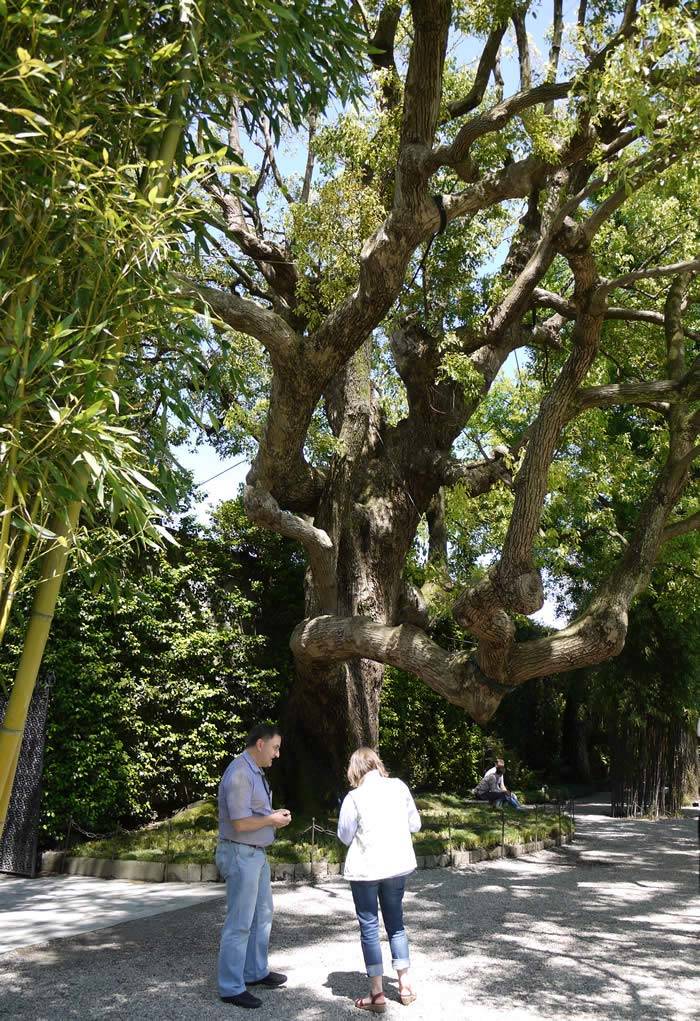
Camphor Laurel Tree – arrived in 1819 in Isola Bella as a tiny sapling
Moving towards the Amphitheatre which is peppered with sculptures by Carlo Simonetta and dates from the 1660’s, white flowering dogwoods still manage to command attention. Two stunning flowering Cornus Kousa (Flowering Dogwood Trees) flank either side of the Amphitheatre.
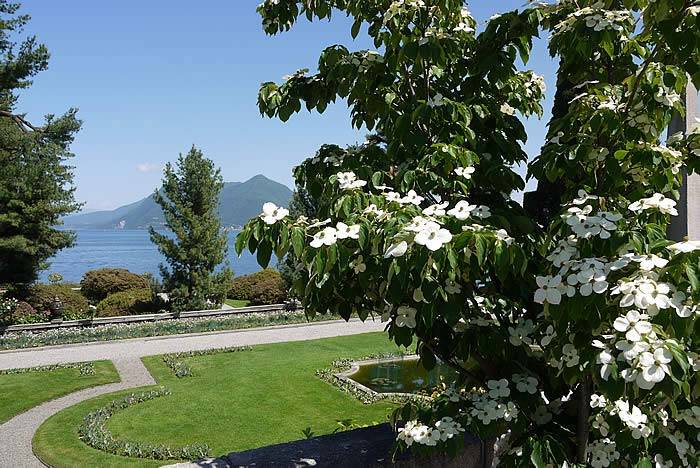
Beautiful, white flowering Cornus Kousa (Flowering Dogwood)
Upwards from here are elegant flights of stairs, the stone softened and enhanced by the rounded shapes of a series of Buxus Sempervirens topiary globes. Note the pleasingly symmetrical effect created by using terra cotta pots all of equal size. Look even closer and you will see the Borromeo family logo (3 interlocking rings) on these custom made pots.
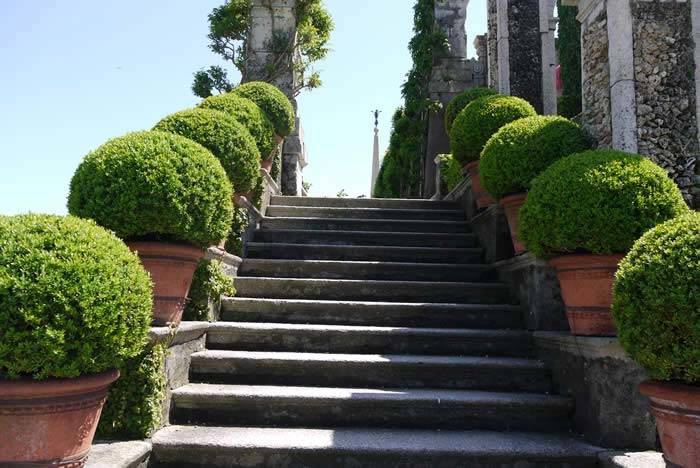
Buxus Sempervirens Topiary Balls
Up onto the main terrace, 37 metres above lake-level, the views are stunning indeed. This terrace is planted with espaliered roses, hibiscus, oleanders and citrus fruits. From here, you can look down over the formal Italianate garden, at the very south of the island. The Italianate garden has a romantic layout with low growing box (Buxus Sempervirens) parterre hedging contributing a lush green softness. The vertical angle comes from the contrastingly deep green foliage of the massive cone shaped topiary yew trees (taxus baccata). In the centre, a simple, elegant pond. Detailing such as the strategically placed citrus fruits in terracotta pots, all of the same size of course, complete the effect.
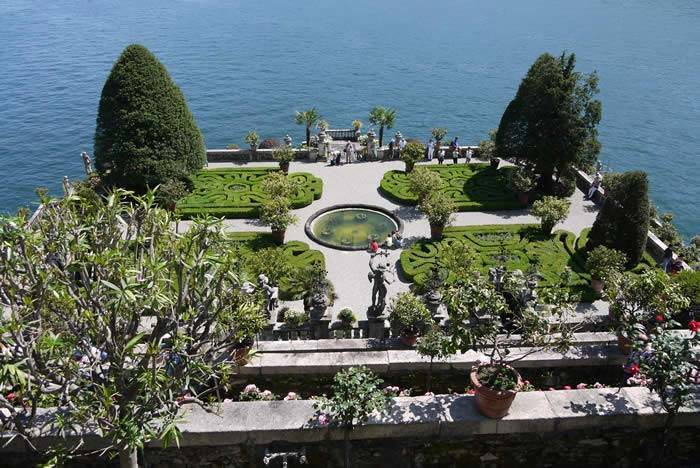
View from the Terrace over the Italianate Gardens
Moving to the side, we discover a stunning example of Gunnera Manicata, showing off its oversized leaves to suitably tropical effect against a lovely backdrop of stone and flowering borders.
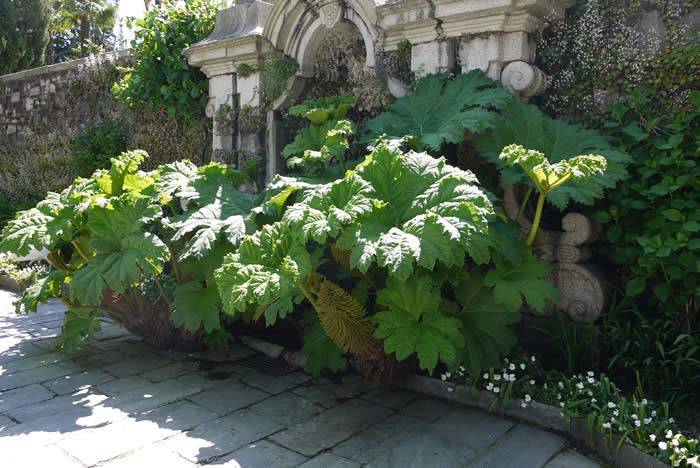
Gunnera Manicata at Isola Bella
There is much topiary throughout the gardens, some of it quite spectacular. Of particular note is the Taxus Baccata Yew Sprial, clipped as a giant spiral, and flanked by another yew left to pursue its natural growing habit unhindered. Somehow this only seems to enhance the formal effect of the spiral topiary. Underneath, a luscious Camellia hedge.
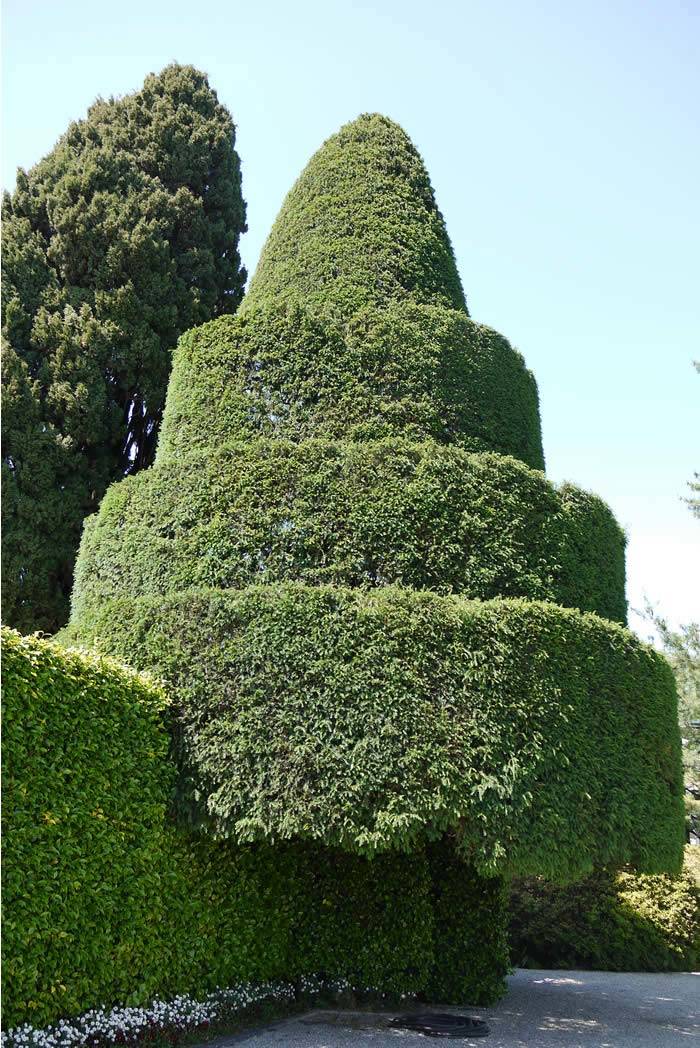
Giant Taxus Baccata Yew Spiral
Stunning viburnum tomentosum plicatum (summer snowflakes) – resplendent with its prolific globus white flowers.
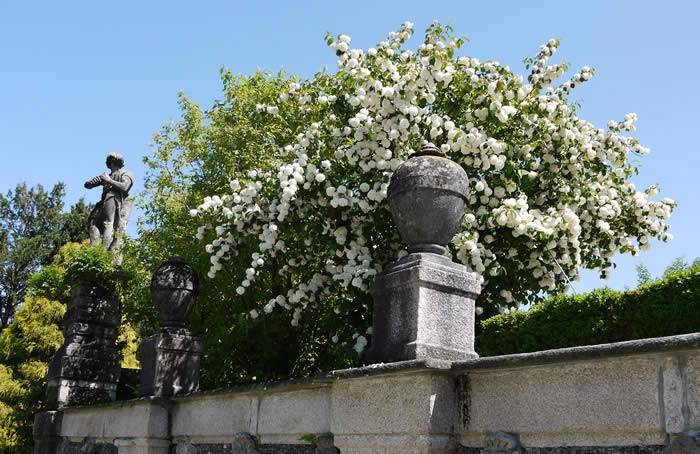
Profuse White Flowering Viburnum
Steps leading up from the Italianate garden decorated with standard rose trees and flanked by tropical palms. You can make out the wall of flowerings roses from an upper terrace in the background. Absolutely stunning but turn the other way and you won’t be disappointed as your eyes sweep over the beautiful Lago Maggiore.
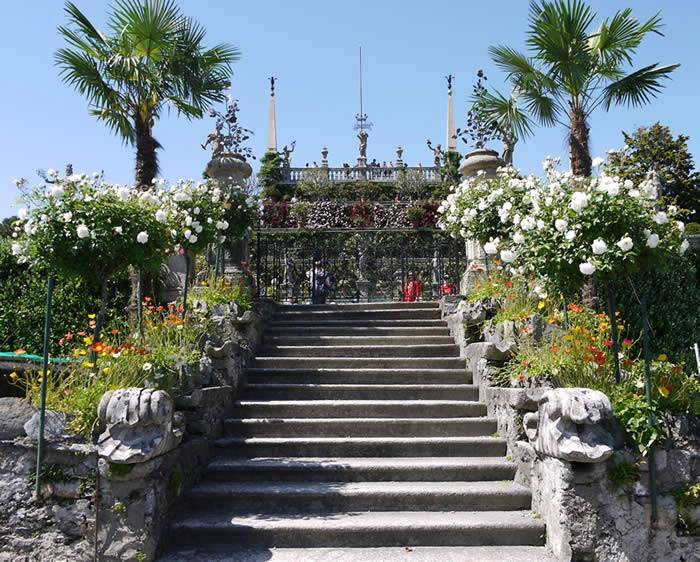
Standard Rose Trees and Tropical Palms
More on the official website – the Borromeo Islands…
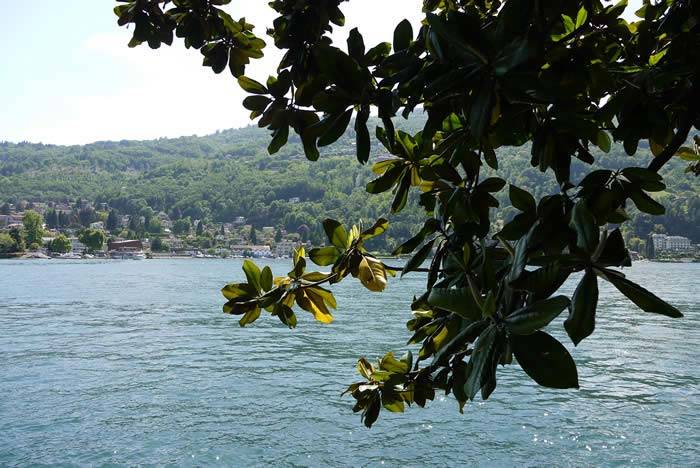
Magnolia Grandiflora happily overlooking the lake!

